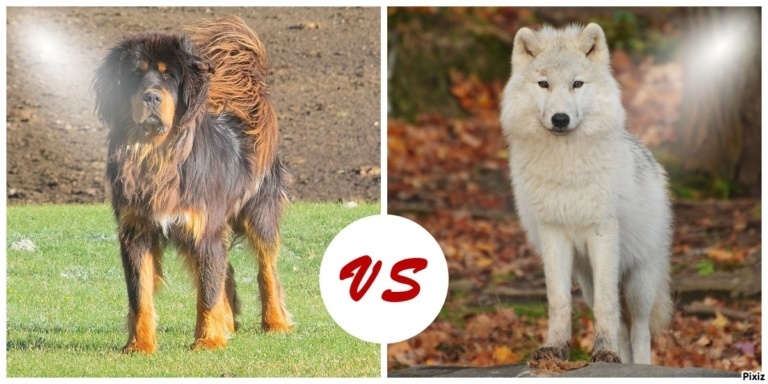When it comes to formidable creatures in the animal kingdom, both the Tibetan Mastiff and the wolf command attention. These two fascinating creatures have captured the imagination of people for centuries. In this article, we will explore the characteristics, behaviour, and key differences between the Tibetan Mastiff and the wolf.
Tibetan Mastiff Vs Wolf
1. The Tibetan Mastiff: A Majestic Guardian
History and Origins:
The Tibetan Mastiff has a rich history dating back thousands of years. Originating in the Tibetan Plateau, these dogs were bred to guard livestock and monasteries from predators. Their ancient lineage and majestic appearance have made them highly sought after around the world.
Physical Appearance:
Tibetan Mastiffs are known for their imposing stature. They are large and powerful dogs with a thick double coat, enabling them to withstand harsh weather conditions. Their expressive eyes and impressive manes give them an air of regality and nobility.
Temperament and Behavior:
Despite their size, Tibetan Mastiffs are generally calm and gentle. They possess a strong protective instinct and are fiercely loyal to their families. These dogs are known for their independence and self-reliance, making them natural guardians.
2. The Wolf: Nature’s Apex Predator
Species and Distribution:
Wolves are members of the Canidae family and are found across various regions of the world. They are highly adaptable creatures, with different subspecies occupying diverse habitats such as forests, tundra, and deserts.
Physical Characteristics:
Wolves are well-adapted for survival in the wild. They have a slender, muscular build with dense fur to endure cold climates. Their sharp teeth, powerful jaws, and keen senses make them efficient hunters and apex predators.
Pack Dynamics and Behavior:
Wolves are highly social animals, living and hunting in packs. They exhibit a complex social hierarchy and strong family bonds. Wolves communicate through vocalizations, body language, and scent marking, ensuring efficient coordination during hunting and territorial defense.
A Comparison of Traits
Size and Strength:
Tibetan Mastiffs are known for their impressive size, with males reaching heights of 26 inches and weighing up to 150 pounds. Wolves, on the other hand, vary in size depending on the subspecies but generally range between 24 to 36 inches in height and weigh between 60 to 120 pounds.
Adaptability:
Tibetan Mastiffs have been bred for centuries to thrive in the harsh Tibetan climate. They have a thick double coat and possess a natural ability to adapt to extreme temperatures. Wolves, with their exceptional adaptability, can be found in diverse habitats worldwide.
Hunting Abilities:
Tibetan Mastiffs were primarily bred as livestock guardians, while wolves are skilled hunters. Wolves possess a remarkable hunting prowess, capable of taking down large prey in coordinated group efforts. Tibetan Mastiffs rely more on their size and intimidating presence to deter potential threats.
Social Structure:
Tibetan Mastiffs are independent by nature and have a strong bond with their human families. They are not pack animals like wolves, who have a highly organized social structure with alpha leaders and intricate communication systems.
Both the Tibetan Mastiff and the wolf are awe-inspiring creatures, each with its unique characteristics and role in the natural world. The Tibetan Mastiff, a loyal guardian, exemplifies strength and nobility, while the wolf, nature’s apex predator, represents adaptability and pack dynamics. Understanding the differences between these remarkable creatures allows us to appreciate their significance and coexist harmoniously.


















